
My Planner
To build your own Itinerary, click  to add an item to your Itinerary basket.
to add an item to your Itinerary basket.
Already saved an Itinerary?

- Things to Do
- What's On
- Accommodation
- Food and Drink
- Ideas and Inspiration
- Shopping
- Plan your Trip
- Corporate
You are here: Greenwich Peninsula > History
- Accommodation
- Things to Do
- What's On
- Food & Drink
- Shopping
Greenwich Peninsula is a distinguishable area of land that has been shaped by the flowing curve of the River Thames, as it travels in a U-shape round the south of the Isle of Dogs/Canary Wharf then north, up and around the Peninsula with The O2 entertainment venue at its tip. The area is recognised by many as a key feature on the ‘Eastenders’ map on the show’s opening credits.
As a location, Greenwich Peninsula is surrounded by river on three sides and hence has a strong industrial heritage and these days is an exciting place for people to live, work, study and visit. Located at the southwestern side is Alcatel Submarine Networks (ASN), world leader in global communications, with a fascinating story to tell about its origins including the time of the Enderby family, and its whaling and roping industry. Its origins and its ongoing trailblazing has established Greenwich not just as the home of time (Greenwich Mean Time) but also home of communications.
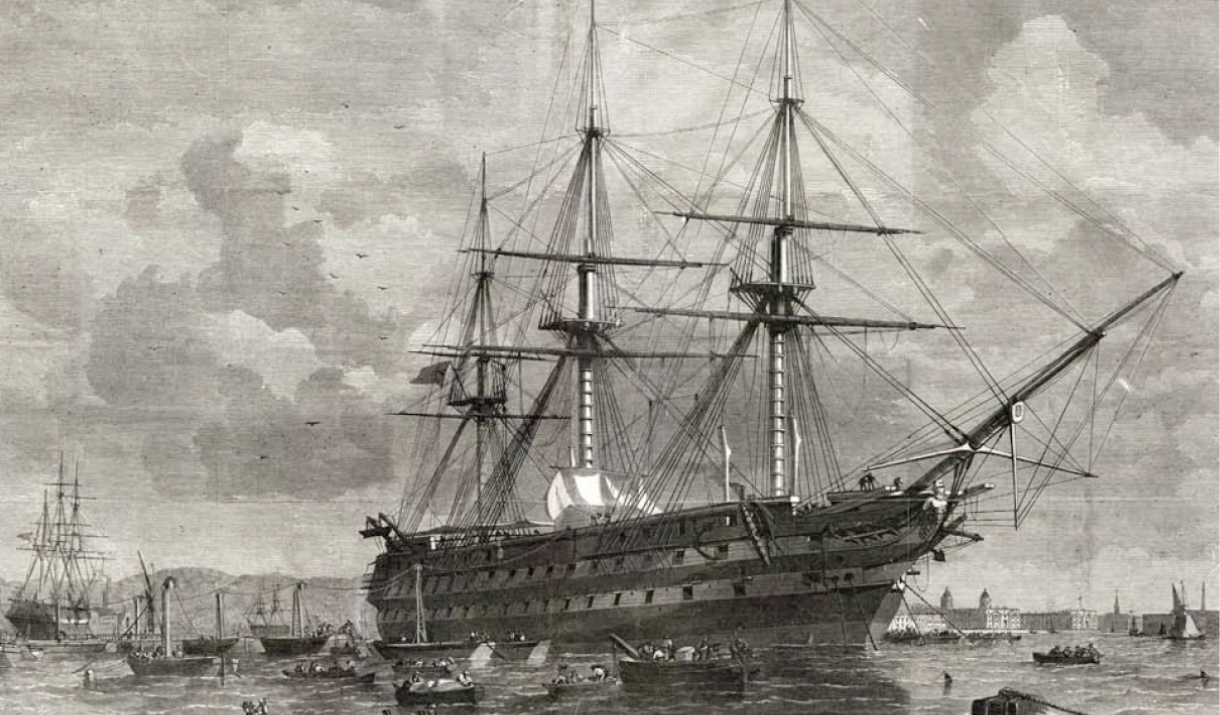
In the Middle Ages, Greenwich Peninsula was a shifting land of marshes, tidal channels and wetlands, best known to ferrymen, eel-trappers, and fowl hunters. It was not before the 1694 construction of the Government Gunpowder Magazine that modern industry arrived here. By the late-18th century, ordnance had been replaced by seafaringactivities. Samuel Enderby II (remember that name) had amassed a 68-strong flotilla by 1791 – hardy, far-ranging ships whose pursuit of whale oil and other valuable products drove Atlantic exploration in the early 1800s. As Samuel Enderby & Sons, the company took over a nearby hemp and rope works and began making sails, too. Their fortunes were manifested in grand buildings, including the handsome Enderby House – a former Georgian family home that still commands ideal views of vessels as they navigate Blackwall Reach.
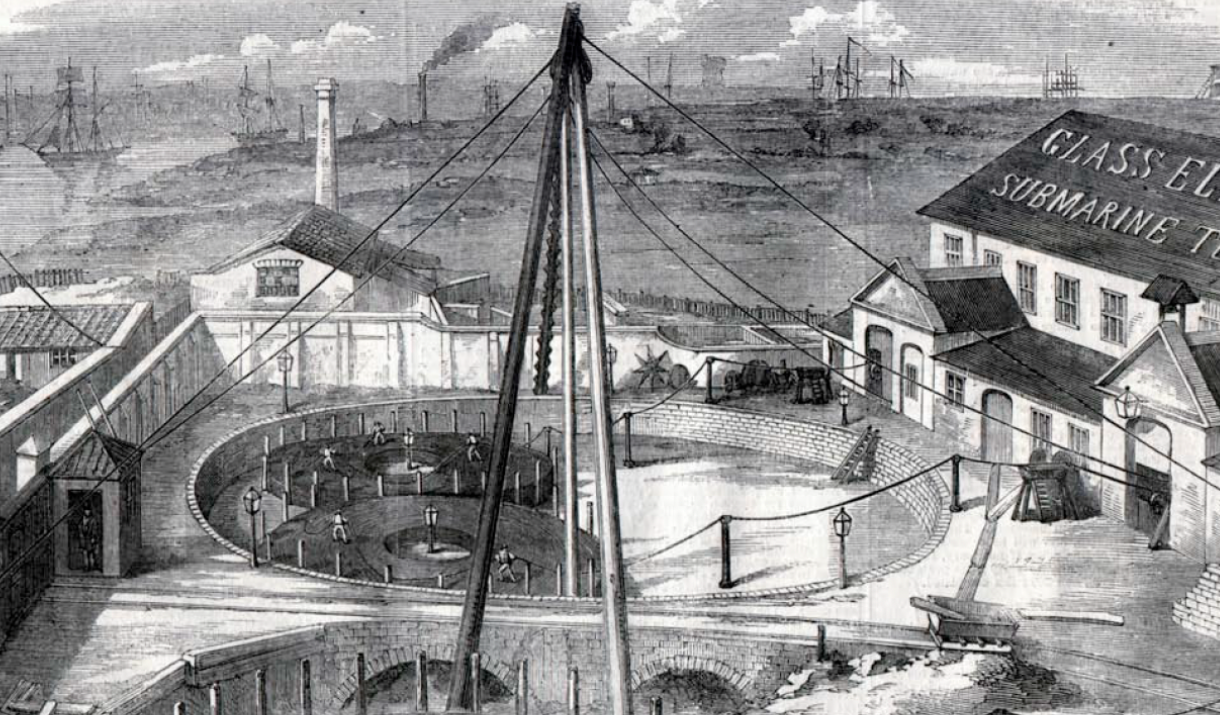
While an 1845 fire bankrupted the Enderbys, the same year the Gutta Percha Company formed. Three years later, they were using the nonconductive, thermoplastic latex made from Malaysian gutta percha trees to insulate the central core of telegraph cables. Working with rope manufacturers like neighbours W. Kuper & Co, on Morden Wharf, they provided nearly all the world’s submarine cables cores until 1865. The Gutta Percha Company and other partners like wire rope manufacturer Glass, Elliot and Co (who’d taken up headquarters in Enderby House) put together here the first transoceanic cables: firstly ‘just’ 25 miles from Dover to Calais then, in 1857, one to span the mighty Atlantic, from Ireland to Newfoundland.
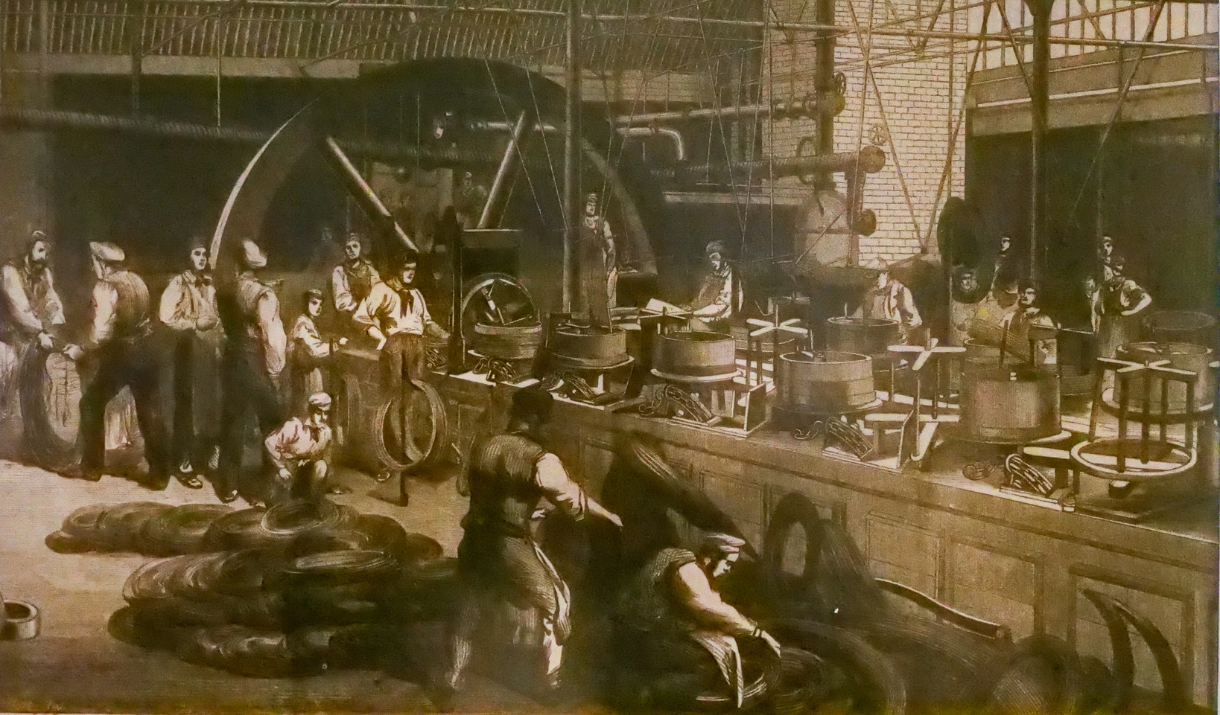
Half the cable made for this historic transatlantic venture was produced by Glass Elliot, and loaded at Enderby’s Wharf onto Nelson's favourite battleship, H.M.S. Agamemnon. This first installation, however, was unsuccessful. In 1864, Glass, Elliot and Co and the Gutta Percha Company merged to form Telegraph Construction & Maintenance Company (Telcon), and manufactured a transatlantic cable which was ultimately successfully installed by the Great Eastern, the giant steamship designed by Isambard Kingdom Brunel. Under Telcon the site expanded greatly in size and scientific significance, attracting some of the best engineering and business minds of its day.
By 1935, further mergers and innovation were afoot, Submarine Cables Ltd (SCL) combined Telcon and the submarine cable division of Siemens Bros. Contributions were also made to PLUTO, the ‘pipeline under the ocean’ that delivered fuel to the 1944 D-Day landings in Normandy.
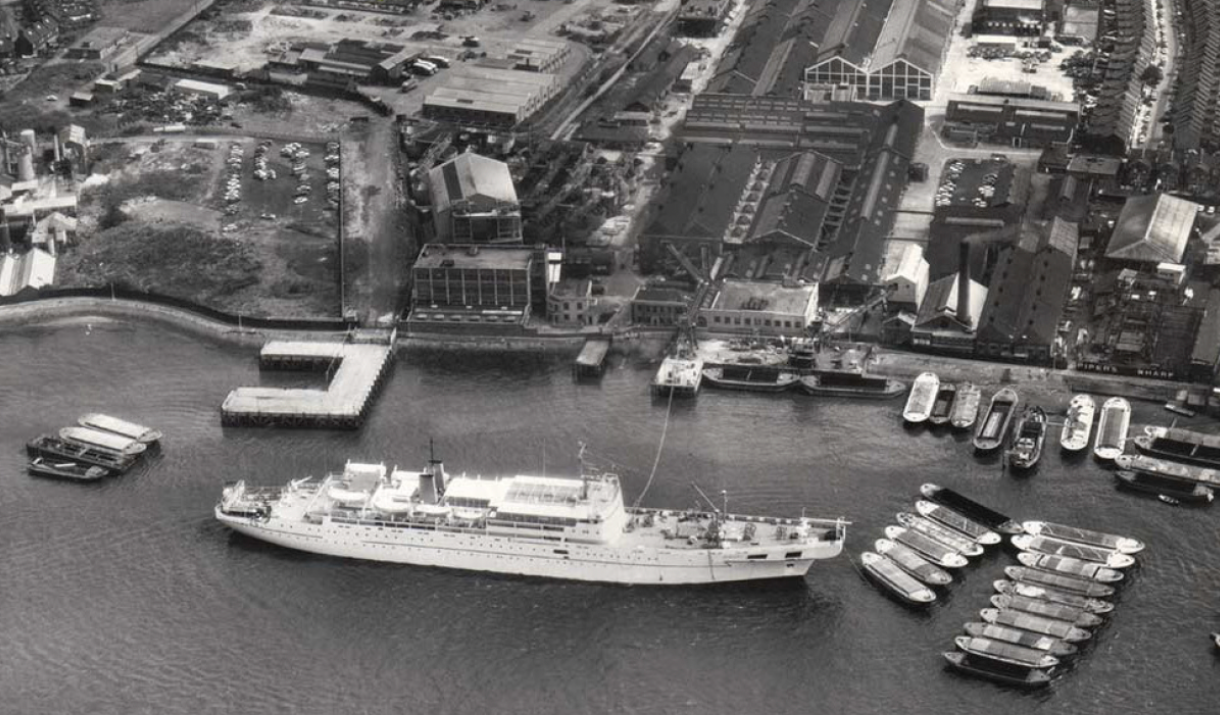
The number of communication firsts, associated historical moments, and innovations clocked up during Greenwich Peninsula’s most significant industrial period is impressive. The first international and Atlantic telegraph cables were engineered and shipped from here; then in 1956 the first Atlantic telephone cable; in 1986 the first international fibre optic cable; and two years later the first Atlantic fibre optic cable, between Europe and the USA.
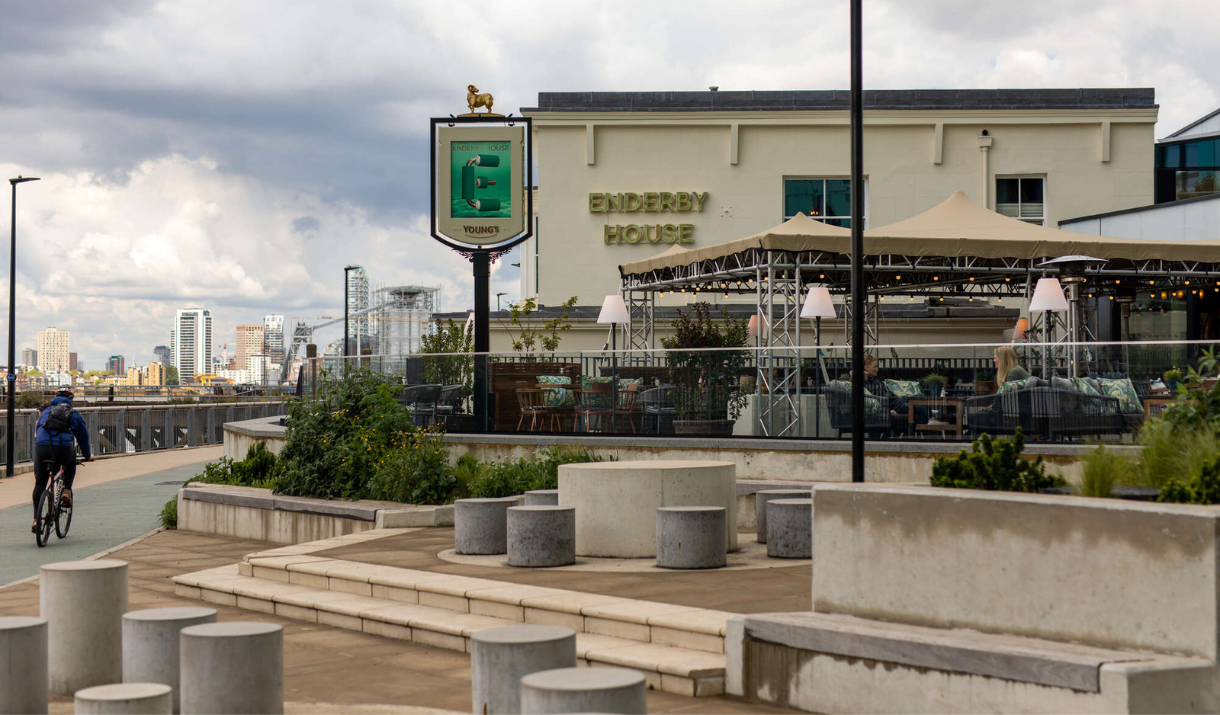
In the latter decades, change remained a constant. Standard Telephone and Cables (STC) purchased SCL in 1970, and transferred their repeater manufacture from North Woolwich to Greenwich.
Then, 1975 saw the last submarine cable, and last of the repeaters for use with coaxial cable, loaded here. In 1993, Alcatel Cable bought STC Submarine Systems and Alcatel Submarine Networks (ASN) was formed the next year. To invest further in this site. ASN divested itself of its river frontage in 2008, including Enderby House, which is now a beautifully refurbished riverside pub.
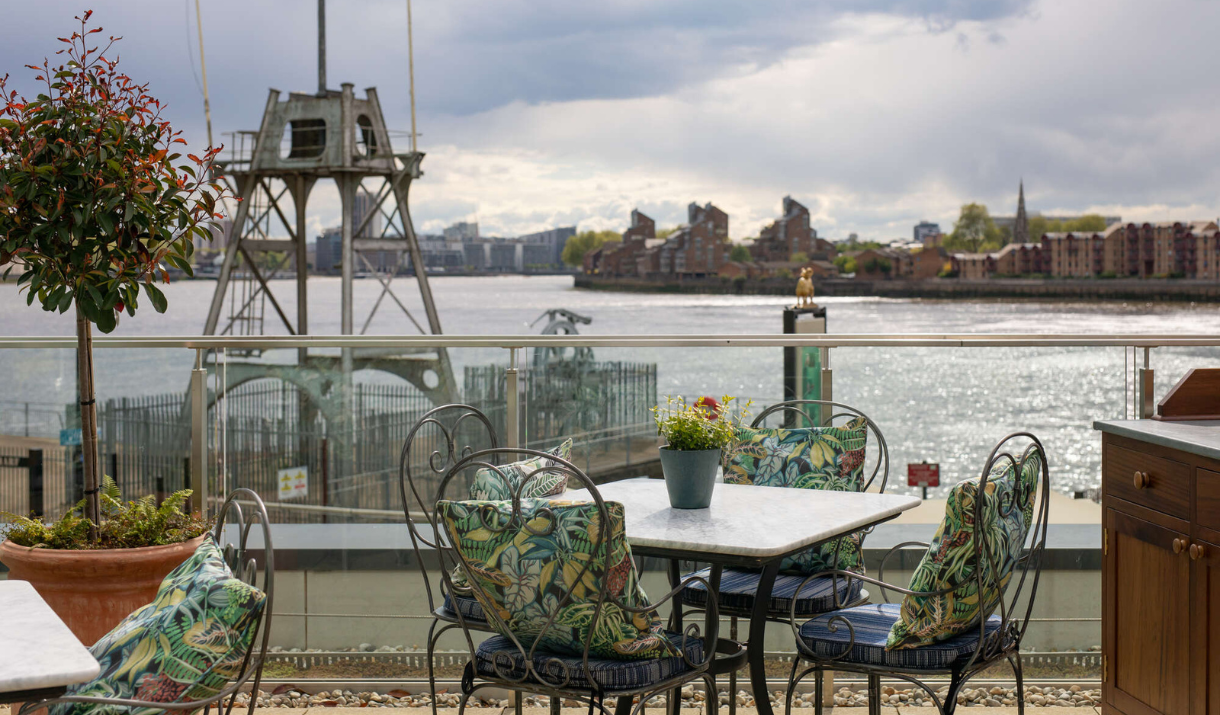
Enderby House still stands proudly over the now-quiet Enderby’s Wharf. Here, you can see a 1950s cable hauler (currently subject of a Heritage protection application), the ferryman’s steps to the Thames, with its historical references to the site as carved by sculptor Richard Lawrence in 2001. Nearby also sits artist Bobby Lloyd’s installation, Lay lines, consisting of three sculptures inspired by cable designs from the telegraph, telephone, and fibre optic eras. Inside Enderby House, original Georgian features like the handsome octagonal room have been restored, as has the cast iron and glass domed roof. In 2021, it was reopened as a pub by Young & Co.'s Brewery.
Other treasures preserved by ASN include a five-foot model of the cable steamer Colonia (launched in 1902), with her bow and stern sheaves, cable paying-out gear; and a cable pay-out log from a voyage in 1909. There’s also a presentation case of a sample of the 1926 Trans-Pacific Bamfield to Fanning Island Cable, manufactured by Telcon, which was the first to be installed by their Cable Ship Dominia. In their time Telcon owned 18 different cable ships.
Also retained are historic treasures like the ship’s bell engraved ‘Dominia 1926’, mounted next to ASN’s war memorial, and a four-foot model of the ship Ocean Layer. This vessel was purchased by SCL in 1953 and converted for cable laying. Five large oil paintings in ASN’s Great Eastern Meeting Room commemorate the cable laying endeavours of H.M.S. Agamemnon, the Great Eastern, and the Ocean Layer; and there are three 1/100 scale models of more recent ASN vessels: Ile de Sein, Ile de Brehat and Ile de Batz (all launched in the year 2000 and still operational today, crossing the oceans to connect the planet).
Records from the historic Enderby’s Wharf site covering 1864-1967 were donated to the Maritime Museum Liverpool in 1987. The following year, ship logs and manufacturing records from 1836 to 1968 were accepted by the National Maritime Museum at Greenwich. In 2003, manuscripts, books, drawings, films, videos, and various cable samples from 1858 to 1996 – artefacts spanning from the earliest times at Enderby's Wharf right through to the optical fibre era – were donated to Cornwall’s Porthcurno Museum of Global Communications. ASN still has uncatalogued Telcon ledgers to conserve, some engineering drawings including a site map from 1893, and an original 1866 The Atlantic Telegraph publication by W.H. Russell who sailed on the Great Eastern to document the laying of the Atlantic Cable and wrote this book about the voyage, with colour illustrations by Robert Dudley depicting each stage of the journey.
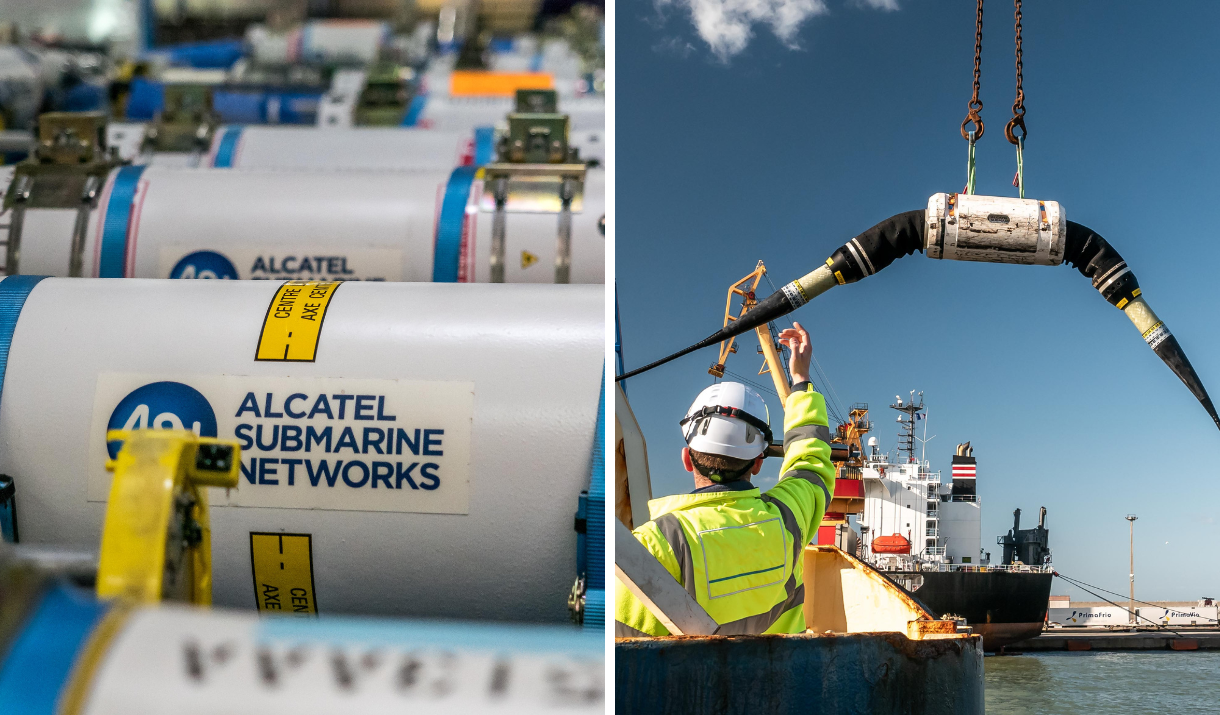
In 2024, ASN celebrate its 30th year, and more than 170 years since its forebears began revolutionising both Greenwich Peninsula’s industry and global communication. This fascinating company and its predecessors, steeped in history, is a long-standing leader and innovator in the submerged communications cable industry. The ASN Greenwich site is the oldest continuously operating telecommunications factory in the world, and still plays a leading part in the communications industry today. ASN is rightly proud of its heritage and its location in Greenwich, the home of time and communications.
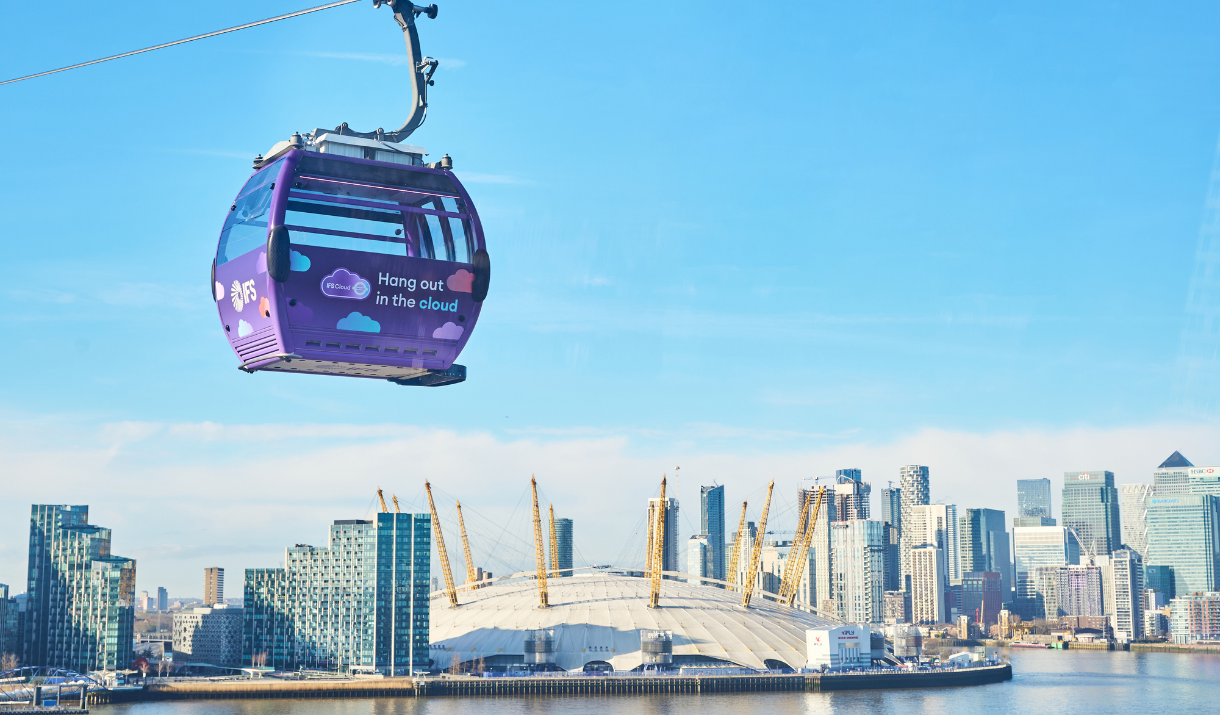
While in the area, it’s well worth a wander through the former historic industrial site around Enderby’s Wharf and a visit to the Grade II Listed Enderby House, where you can refresh yourself at your journey’s end, or refuel before continuing the walk along the riverside to enjoy a day exploring Greenwich Peninsula. From the world-famous entertainment venue The O2 and London’s only cable car, to free galleries, riverside parks, cool places to stay, eat and drink, and a vibrant musical and cultural scene.
© Visit Greenwich. All Rights Reserved





